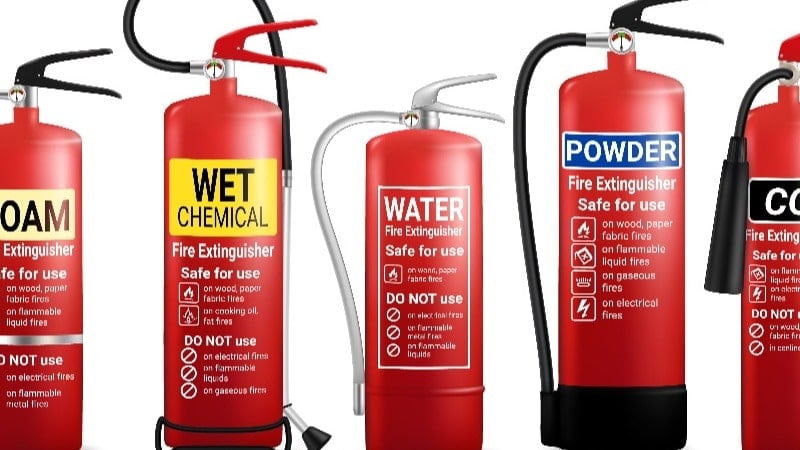What to Do When Your Security Vendor Goes Silent
Your fire alarm shows a trouble signal. Last week's sprinkler inspection never happened, and despite three calls and multiple messages, your vendor...
 |
Fire protection professionals committed to safeguarding lives, property, and peace of mind. |
 |
Solutions designed for your property type, from multi-family housing to healthcare facilities to retail spaces. |

|
Fire alarm, area of refuge, camera, and card access monitoring services. |
 |
Clear communication and instant response when every second counts. |
 |
From kitchens to server rooms, the right protection for every space. |
 |
Keep your primary defense system ready and reliable. |

|
Manage all your properties' access from one simple platform. |
 |
Monitor multiple properties in real time from anywhere, at any time. |

|
Document upcoming maintenance appointments and improve your proactive budget planning. |
 |
Fire Extinguisher Maintenance Checklist Learn the requirements for testing extinguishers monthly, annually, and beyond. |

|
Track all your inspection deadlines in one place. |
 |
Kitchen Hood Inspection Checklist Ensure your kitchen hoods are safe and compliant. Download a complete list of testing requirements. |

|
Guide to Fire & Security Monitoring Your complete property protection handbook in practical terms. |

|
Running a food truck takes work—this guide gives you the tools to keep it safe and up to code. |
 |
Comprehensive Guide to NFPA 13 and NFPA 25 Fire Sprinkler Systems Navigate sprinkler system requirements with confidence using our straightforward guide to codes and maintenance. |

|
Get your essential compliance guide. |
 |
When reliability matters across 18 restaurants, micromanagement doesn't. |

Portable fire extinguishers have specific letters to designate what type of fires they can be used on. Choosing the right type of extinguisher to fit your needs is essential since using the wrong type could be ineffective in putting out a fire or could even make it worse, placing lives and property at greater risk.
A class D fire extinguisher is used on fires that involve combustible metals. This type of fire, which can cause significant damage, often occurs when small pieces of metal or dust that are generated during processes in a manufacturing, industrial, or laboratory setting ignite. A class D fire extinguisher is needed to put out a combustible metal fire. Other extinguishing agents, including water, are ineffective or can actually make the fire worse. Look for a five-point star containing the letter “D” to identify an extinguisher that’s manufactured to combat combustible metal fires.
The following are some of the combustible metals a class D fire extinguisher can be used on:
The best way to extinguish a combustible metal fire is by smothering it, which separates it from oxygen and absorbs its heat. The class D fire extinguisher uses a dry powder, either powdered graphite, granular sodium chloride, or a copper-based powder, to accomplish this.
A class D fire extinguisher should be visually inspected monthly to make sure it’s in its proper location, can be easily seen and accessed, is fully charged and operational, and has adequate pressure, as seen on its pressure gauges. This inspection should also ensure its pins and seals are in place and its nozzle is unblocked.
Maintenance of a class D fire extinguisher should be conducted at least once a year, or more often if your visual inspection detects a problem. This maintenance includes an inspection of the extinguisher’s mechanical parts, extinguishing agent, and expelling means and must be performed by an approved fire extinguisher servicing company.
Every 6 years, class D fire extinguishers must be emptied and maintained by the servicing company. And every 12 years, the company should perform hydrostatic testing, which uses water to pressure-test the extinguisher. This helps prevent cylinder failure or rupture.
If a class D fire extinguisher is used to put out a fire, it should be checked by a professional and recharged immediately to ensure it has the proper amount of dispensing agent left and maintains the right pressure levels. It should be replaced if it is damaged or expired based on a servicing tag date or an expiration date that’s stamped on the cylinder.
If your business could have combustible metal fires, you’ll need to have dry powder (class D) fire extinguishers available to help keep your employees and assets safe. These extinguishers need to be professionally serviced and maintained to ensure that they’ll be ready if and when you need them. Contact Brothers Fire & Security today to partner with a company that can design, install, test, and maintain your fire suppression systems and take care of your other fire safety needs, including sprinkler systems.

Your fire alarm shows a trouble signal. Last week's sprinkler inspection never happened, and despite three calls and multiple messages, your vendor...

Winter weather and holiday demands can make managing multi-location security a nightmare. Fall is your best window to upgrade security systems,...

This is a story about a multi-location public facility organization—and the moment they learned their (now former) security vendor was dropping...